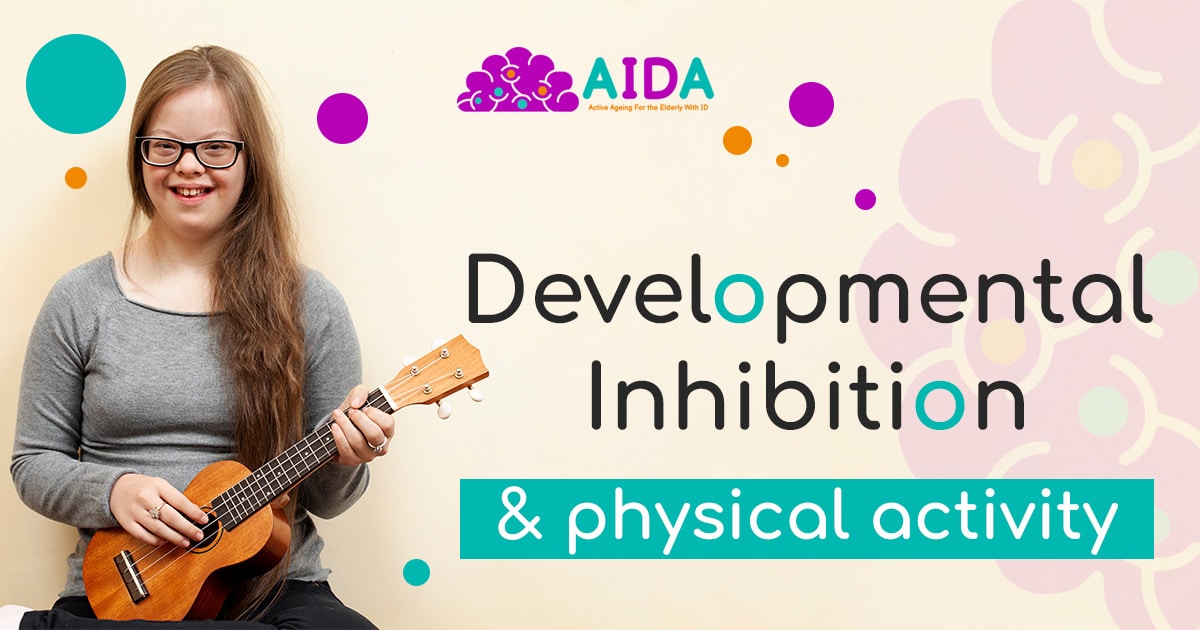-
Body and movement
Danish and international research shows that people with developmental inhibition are less physically active than the rest of the population. A number of barriers make physical development difficult for the target group.
Dorte From | National Board of Health
People with developmental inhibition are generally less physically active than the rest of the population. At the same time, people with developmental inhibition are less physically active than the level recommended by the WHO can help maintain physical health (Blomqvist&Börje, 2015).
A Danish study from 2013 shows that 38 percent of the target group does not exercise (Sørensen et al., 2013). People with developmental inhibition are over-represented in relation to the rest of the population in a number of diseases, and they die earlier and to a greater extent as a result of, among other things,
- Overweight
- Diabetes
- Cardiovascular disease
- High blood pressure
- Osteoporosis
- Depression
These diseases, which can be a consequence of physical inaction, can be prevented and positively affected with physical activity. (Blomqvist &Börje, 2015).
-
Particular challenges make physical activity difficult for people with developmental inhibition
Being physically active can be particularly challenging for people with developmental inhibition. The target group often has a sedentary and passive life. Many have no experience of training and getting tired after physical exertion (Sweden’s Municipalities och Landsting, 2018; Blomqvist&Börje, 2015).
Cognitive impairment can mean that it is difficult for people with developmental impairment to understand and recognize the usefulness of physical activity. At the same time, cognitive and social difficulties can be a challenge in terms of participating in group activities. Participation in physical activity in associations and clubs can be challenging if you cannot transport yourself back and forth to the activity and are dependent on help with transport and possibly also for participation. A flawed economy may mean that the person cannot afford to pay any entry fee and transport (Elnan, 2010; Wallén, 2014; Blomqvist&Börje, 2015).
-
-
Some diagnoses pose particular challenges
-

The diagnoses Prader-Willi Syndrome and fragile X syndrome can affect physical fitness and response to exercise, as both the coarse and fine motor development is impaired and developed later than usual due to low muscle tone (muscle tension) and hypermobile joints. People who have fragile X syndrome also have difficulty keeping their balance. In people with Prader-Willi Syndrome, muscle relaxation, overeating and an energy level 50 to 60 percent of normal energy levels (Blomqvist&Börje; 2015) are seen.
Down syndrome also shows hypermobility and muscle relaxation. In addition, people with Down syndrome often have a heart defect that can decrease physical ability (Blomqvist&Börje; 2015).
-
Limited research knowledge of the effects of physical activity
Examples of several physical activity measures for the target group have been found both in Denmark and internationally, which have been implemented and described, despite the fact that research in this area is inadequate. These are activities that take place both in everyday life in the citizen’s housing or employment offers and in clubs, sports centres, etc. The actions have only been systematically evaluated to a limited extent, but there seems to be a positive effect on the target group in terms of strengthening physical, emotional and social health. There is evidence that physical activity is at least as important to this target group as to other population (Elnan, 2010).

The involvement of citizens’ own resources and mastery has been a common focus in the efforts, which has proven to be crucial for people with developmental disabilities to experience meaningfulness and motivation for physical activity (Furesø Municipality, 2014; Bergström et al., 2013; Bergström&Börje, 2015; CFK, 2015).
In particular, predictability and recognizability have a major impact on the citizen’s involvement in activities and desire to move. Many have experiences from the past where they have not been able to live up to different sports methods and certain requirements for how the body should be used (Social Educator Online, 2014).
One measure to focus more on the citizen’s desire and commitment to movement may be to include “The Feel Good Way” as a form of exercise. Designed for people with developmental, intellectual and physical disabilities, this one is about dancing and moving through simple steps and movements so everyone succeeds from the get-go (Social Educator Online, 2014).
In Denmark the National Board of Health and Welfare in Denmark has developed, published and operated a Knowledge portal in Social area.
Sources
Bergström H. et al. (2013). Hälsofrämjande gruppbostad: Planering, genomförande och utvärdering av ett hälsofrämjande program. Rapport 2013: 5. Stockholm: Centrum för epidemiologi och samhällsmedicin.
Blomqvist, Sven & Rehn, Börje (2015). Fysisk aktivitet och hälsa för personer med utvecklingsstörning. Fysioterapi, (1): 26-31.
CFK (2015). Indflydelse på egen sundhed. Aarhus: CFK – Folkesundhed og Kvalitetsudvikling.
Elnan, I. (2010). Idrett for alle? Studie av funksjonshemmedes idrettsdeltagelse og fysiske aktivitet. Trondheim: NTNU Samfunnsforskning AS, Senter for Idrettsforskning.
Furesø Kommune (2014). Slutevaluering af ’Sundhedsfremmeprojekt på bosteder for psykisk udviklingshæmmede’. Furesø Kommune.
Socialpædagogen Online (2014). Det skal være sjovt at slå dovenskab. Socialpædagogen Online, Vol. 71(20): 14-17.
Sveriges Kommuner och Landsting (2018). Hur skapar vi bättre hälsa för personer med funktionsnedsättning? Beskrivning av ojämlikheter idag samt förslag på förändrade arbetssätt.Stockholm: Sveriges Kommuner och Landsting.
Sørensen, J. et al. (2013). Barrierer for lige adgang til det primære sundhedsvæsen: For personer med en intellektuel eller psykisk funktionsnedsættelse. Taastrup: Danske Handicaporganisationer.
Wallén, Eva Flygare (2014). Betydelsen av hälsomma kost- och motionsvanor hos personer med utvecklingsstörning: En sammanställning av evidens. Evidensrapport nr. 5. Stockholm: Habilitering & Hälsa. Stockholms Läns Landsting.




